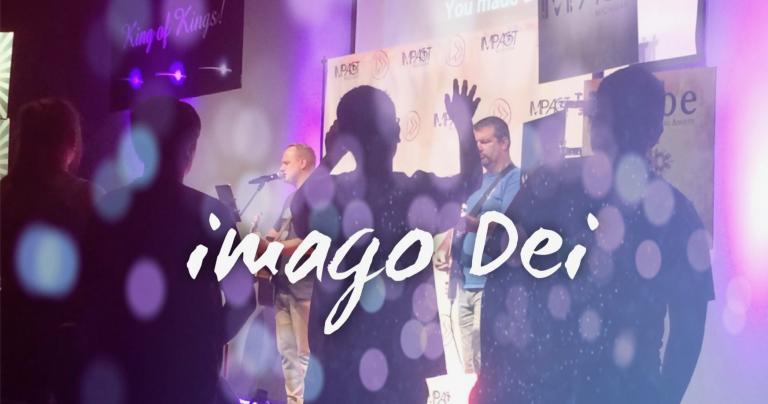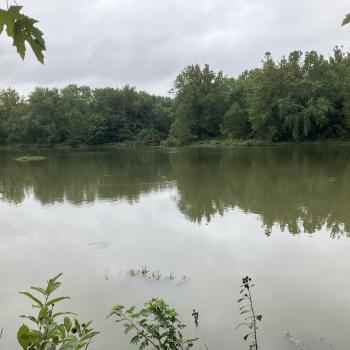Every good scholar, a Theologian being no exception, takes time to engage a topic thoroughly. When one has the opportunity to explore a topic across disciplines, it is difficult yet highly rewarding. For those of us who enjoy Theology, we find that our field lends itself to interdisciplinary studies. For instance, a Theologian may spend time revisiting an era in Church History, like the times of the three Magisterial Reformers. Or a Theologian may engage at the crux of two branches of Theology, like Soteriology in light of Pneumatology. A Theologian may also do work outside of the “Christian” disciplines, like the realms of science or anthropology. One’s creativity could be boundless, while remaining moored to the Word and our historical faith.
on Dominion, Creativity, and Cyborgs?!
It is in good faith that I share these writings on imago Dei.[1] I do not rest on my own opinions as much as I do upon this synthesis of material from Theologians and Christian leaders who have been faithful to the truths that the Spirit is leading them into.
- If you’re enjoying this series and would like to track with me, but you like the news delivered to your doorstep . . . Patheos delivers! To receive email updates each time I publish CLICK HERE
i. Dominion and Creativity
Genesis 1.26-27 shares a concept about the imago Dei that cannot be ignored, that of dominion and sharing in God’s creativity. “This is to be understood as a call to share in the creative, sustaining dominion of God and so act as the visible representatives of God’s benevolent care for creation.”[2] Man is to rule creation as a faithful steward, accountable to God. We are stewards, royal rulers, priests of creation, ambassadors of God on earth, etc. [3] Beyond the scope of this series of writings, others have taken time to further define the principle of dominion. Nonetheless, it is an aspect of the imago Dei that we can both aspire to and live into as Christians.[4]
Hugh Miller (1802-56), was deeply impressed by the fact that the most beautiful forms of human architecture, such as the structures in Gothic cathedrals, were precisely those found among fossil forms, even though there had been no conscious imitation. For Miller this was corroboration of a Christian doctrine of creation according to which humans had been made in the image of God.[5]
Granted, there may be secular alternatives to explain away Miller’s discovery. There always will be. However, it could at least be classified as an anomaly. On the other hand, Christians could ask a thoughtful question. Would God give man the innate, creative ability to form structures that He had already perfected when creating previous life forms? It is our belief that part of dominion is participating in the ongoing creative work of God.
ii. Cyborgs: Humanity Exploited
Against responsible dominion and creativity, modern science may be attempting to create new ethics. These pseudo-values are determining the rules that are leading us ever closer to the human cyborg.
Jacqui Stewart reviews arguments in favor of cyborgs, noting that some believe that we are co-creating with God, and that technology in itself has become our sacred space. Even though she disagrees with their rationale, she spells out their argument:
Because humans themselves are evolved creatures within the natural world, technology and the advent of the cyborg is itself natural, is part of the journey of exploration of the species that is described in Genesis as being in the image and likeness of God.[6]
Philip Hefner simply retorts, “If the techno-human, the cyborg, is created in the image of God, what does that tell us about God?”[7]
His question is easy to answer for those of us who believe we are getting strangely close to playing God, or worse yet playing Dr. Frankenstein.
With all the advances for humanity (from the Human Genome Project to nano-technology) one wonders what humans will actually become. Are we utilizing this new technology, bearing in mind that we are image-bearers? Do we exercise responsible dominion or merely our domination over technology? Are we being creative or destructive in the long run?
Stewart pronounces, “This is very creative ground, though it perhaps does not take sufficiently seriously humans’ capacity for idolatry, for stretching our imaginations towards desires that are ultimately unwholesome.”[8] As with idols, there is a fine line between making an image and being ruled by one.

Pre-dating the cyborg debate by decades, C.S. Lewis sheds considerable light on our discussion. “Each new power won by man is a power over man as well.”[9]
iii. Closing thoughts on the imago Dei series
These writings stem from my research in an interdisciplinary course and international science and faith conference at Asbury Theological Seminary. I focused on scholarly dialogue at the intersection of imago Dei and Christian scientific exploration. A guiding question was, what implications would a Theological understanding of imago Dei hold for a contemporary scientific understanding of human nature?
Science is rapidly advancing, affecting humanity at every turn. For Christians, this is quickly becoming a central matter. We now have the capabilities not only to transform ourselves, but to craft our future as well. Pope John Paul II offers some lasting thoughts about the intersection of humanity and science, that serve as a stark reminder of our responsibility to establish a Christian ethic in our era.
It is essential that we be convinced of the ethical over the technical, of the primacy of the person over things, of the superiority of the spirit over matter. The cause of the human persons will only be served if knowledge is joined to conscience. Men and women of science will truly aid humanity only if they preserve “the sense of transcendence of the human person over the world and of God over the human person.”[10]
notes:
- I truly enjoy ministering as an Evangelical Columnist in the Patheos community. If you’re enjoying my writings and would like email updates, Patheos delivers! To subscribe CLICK HERE













